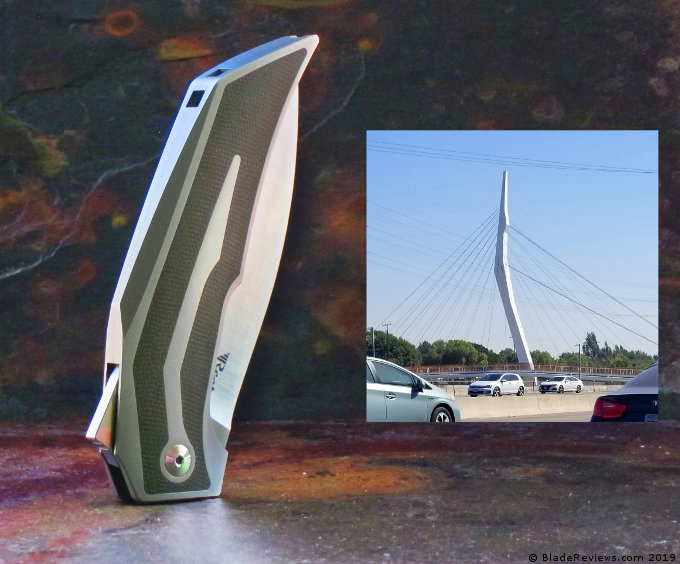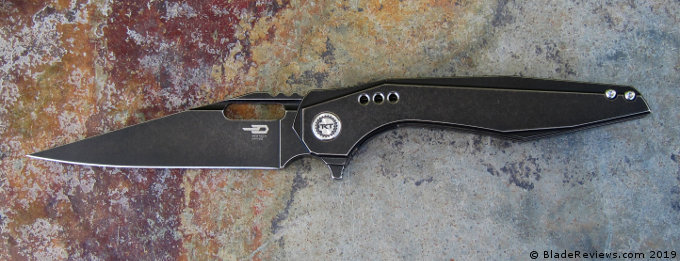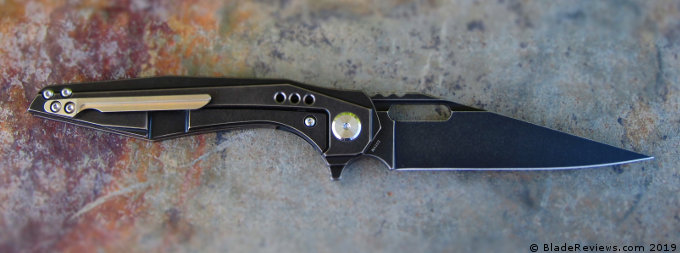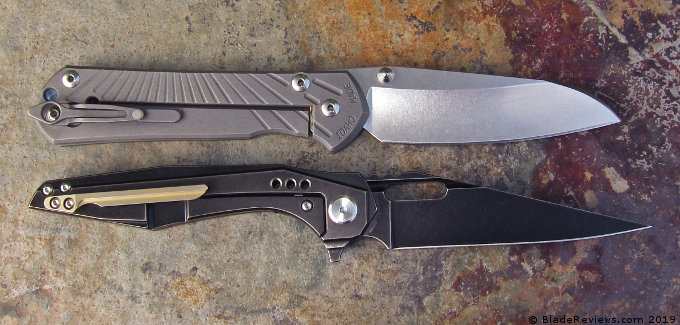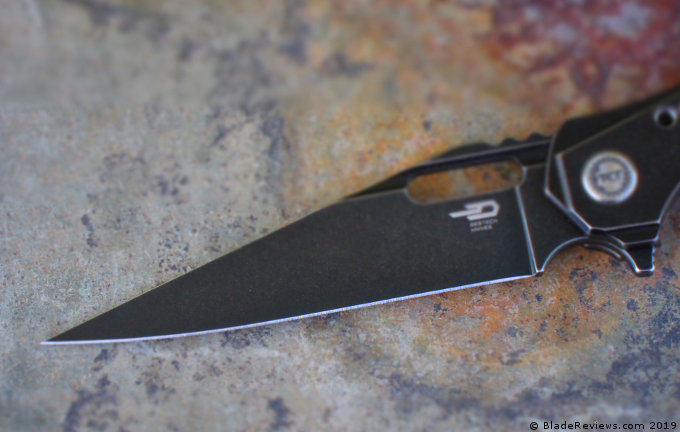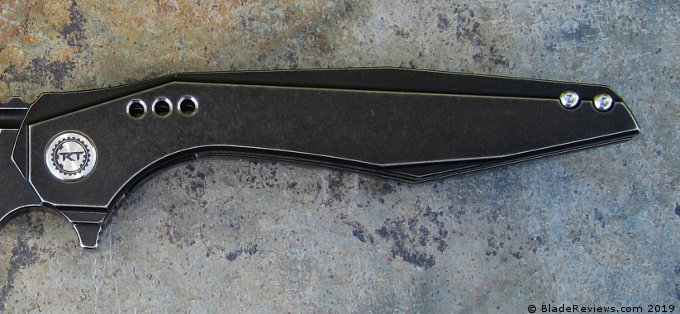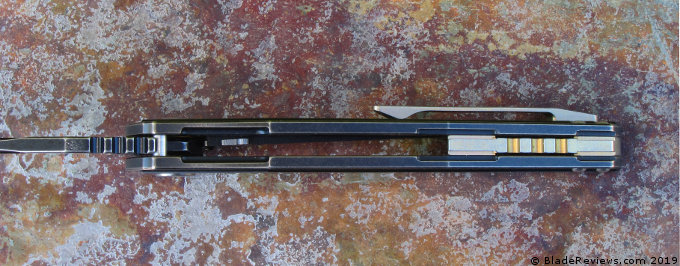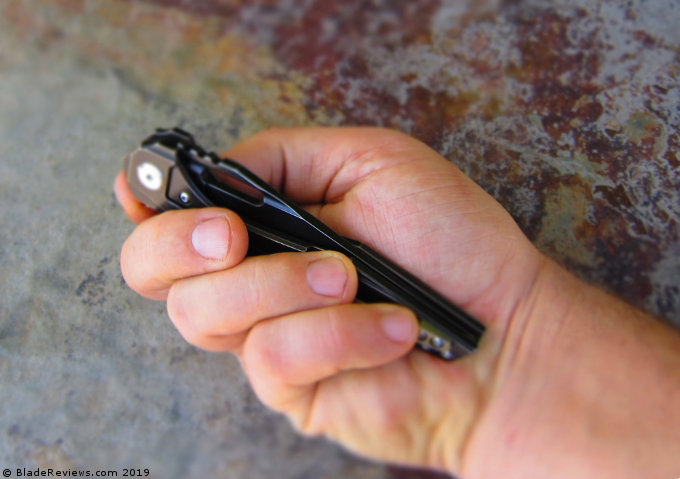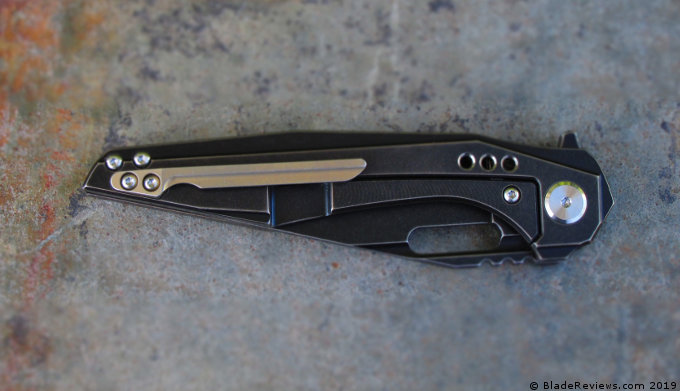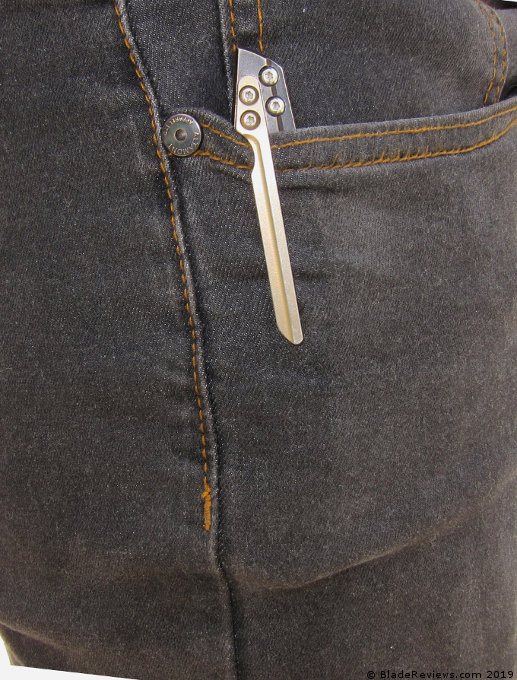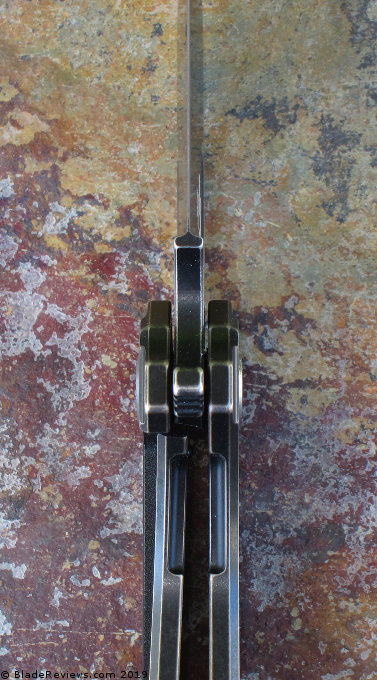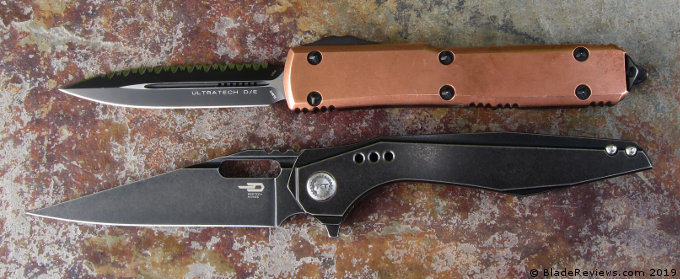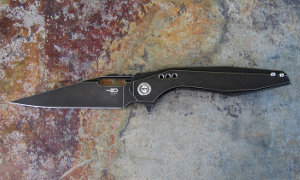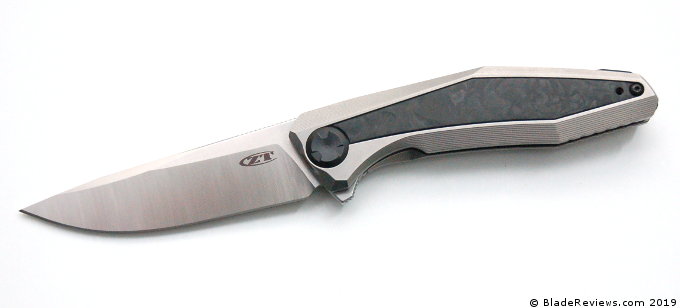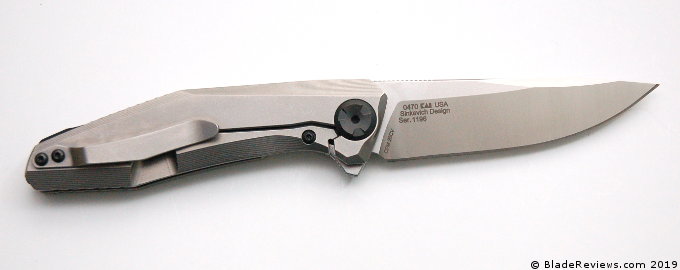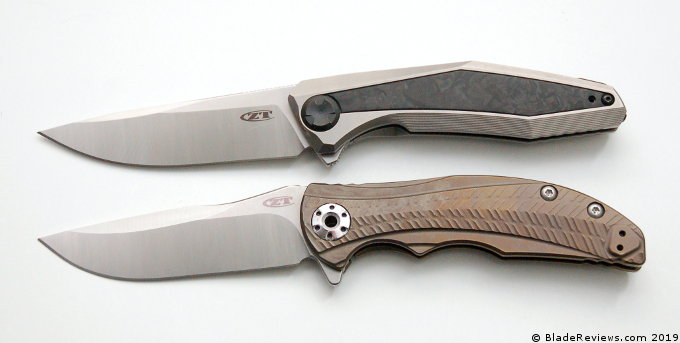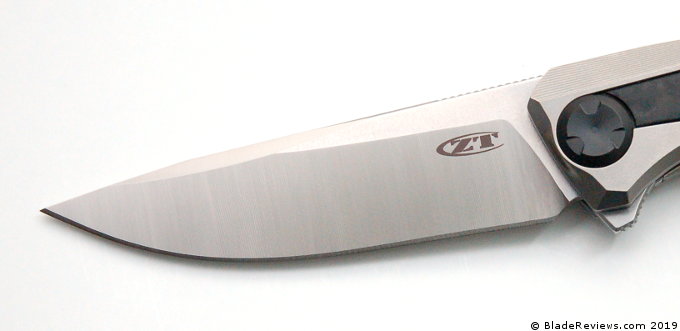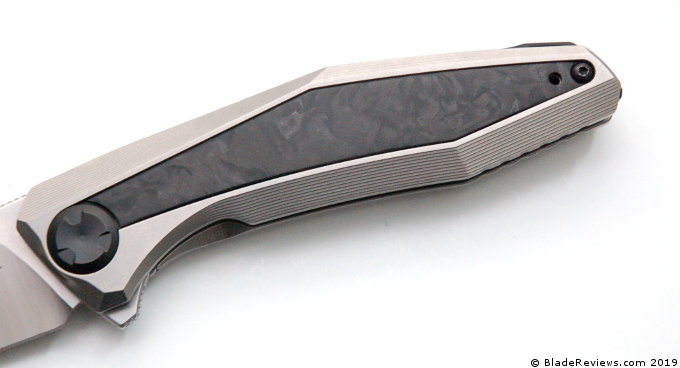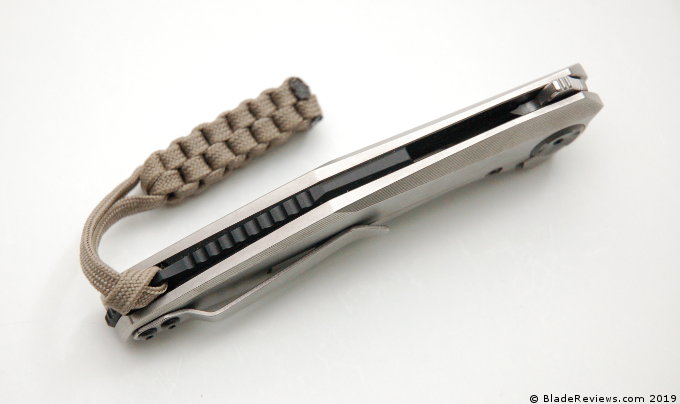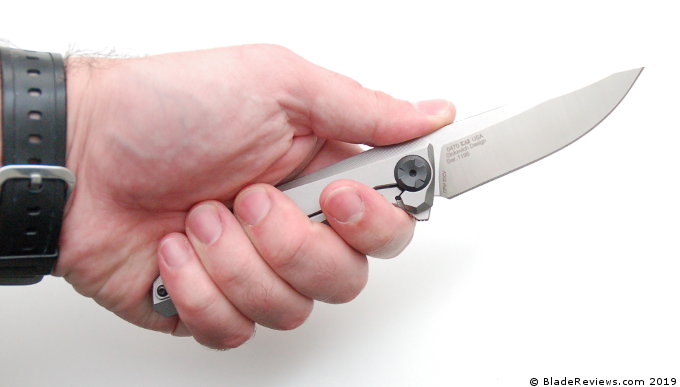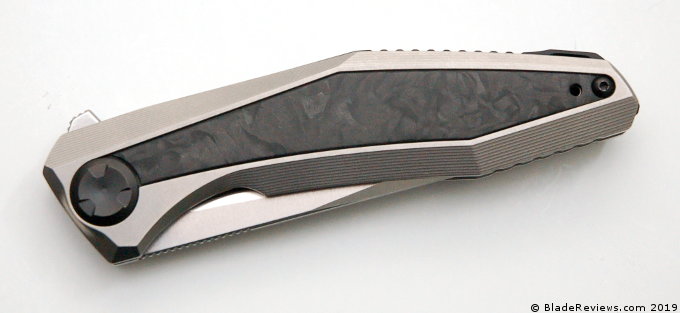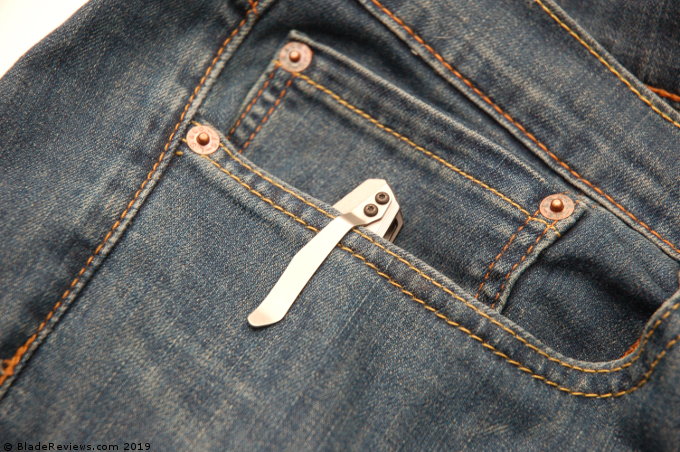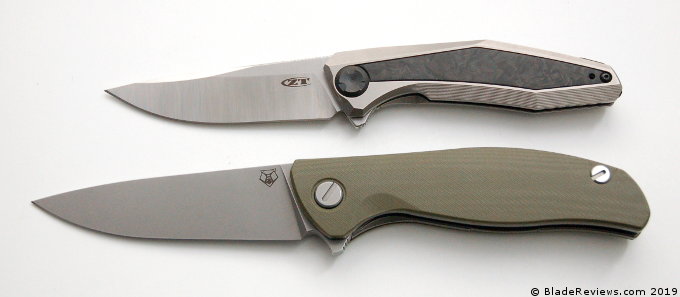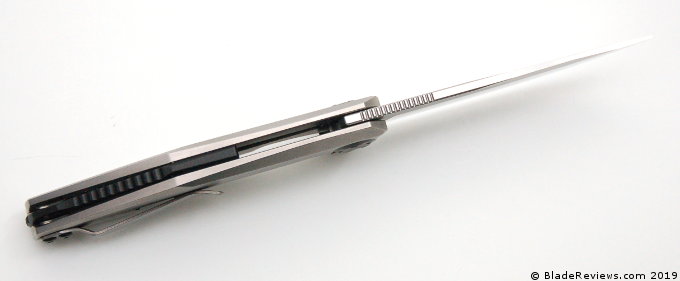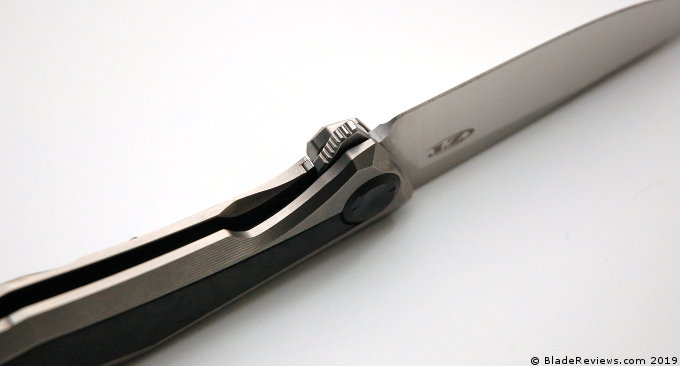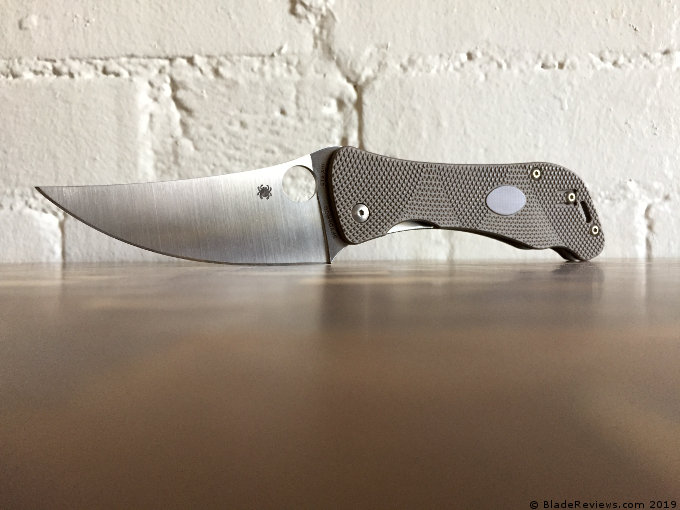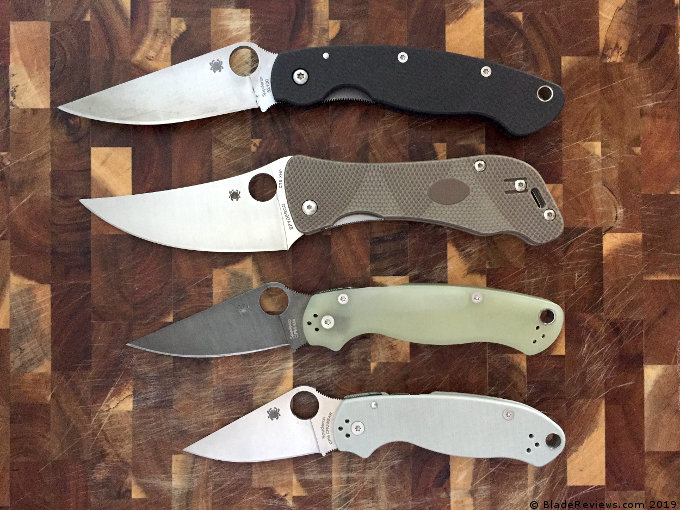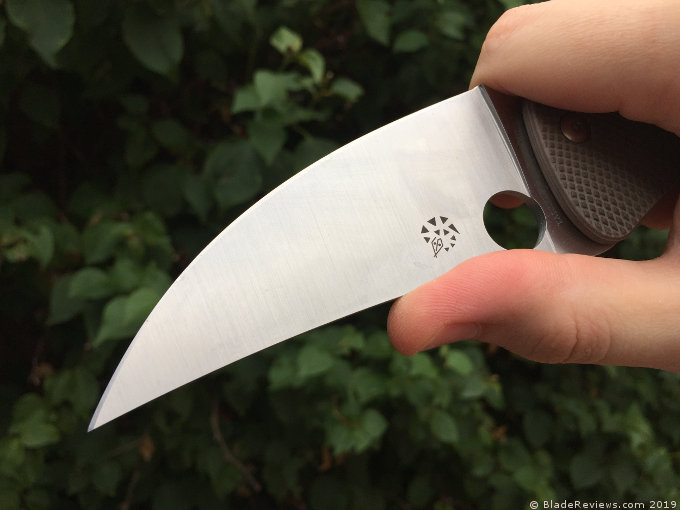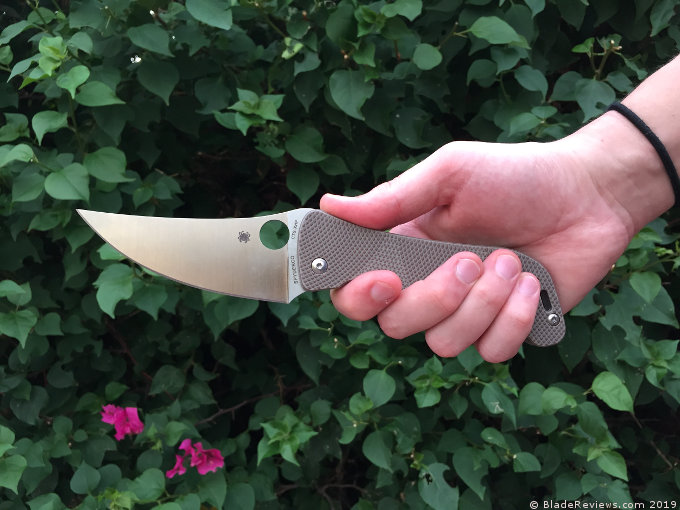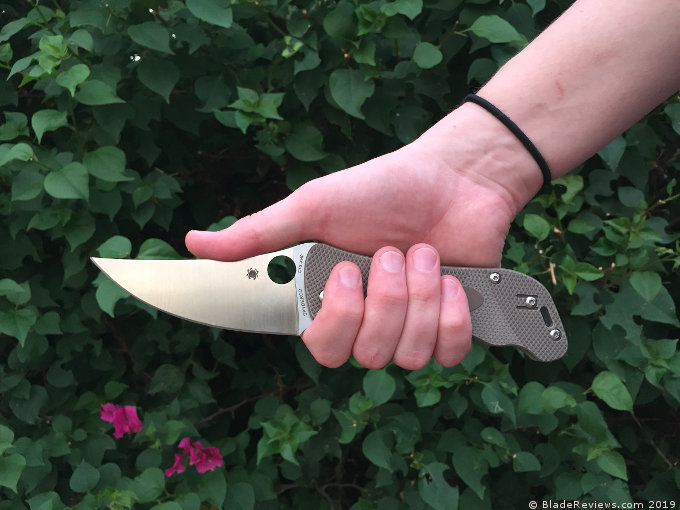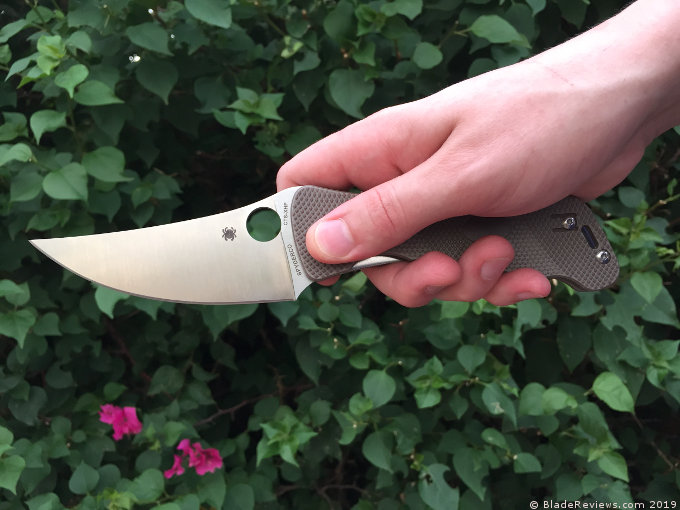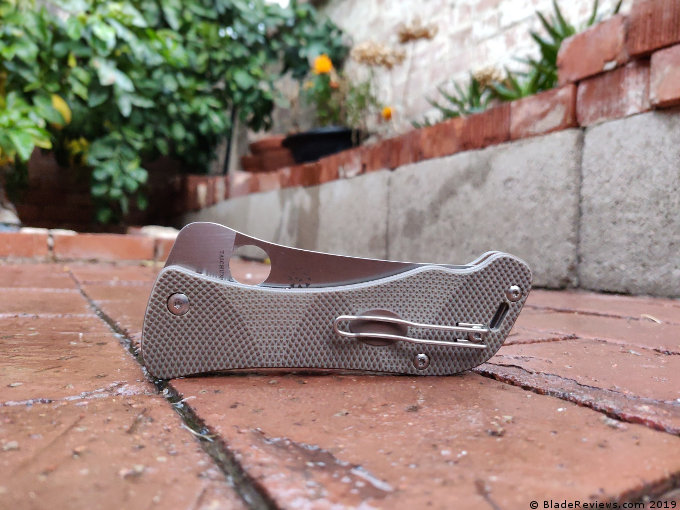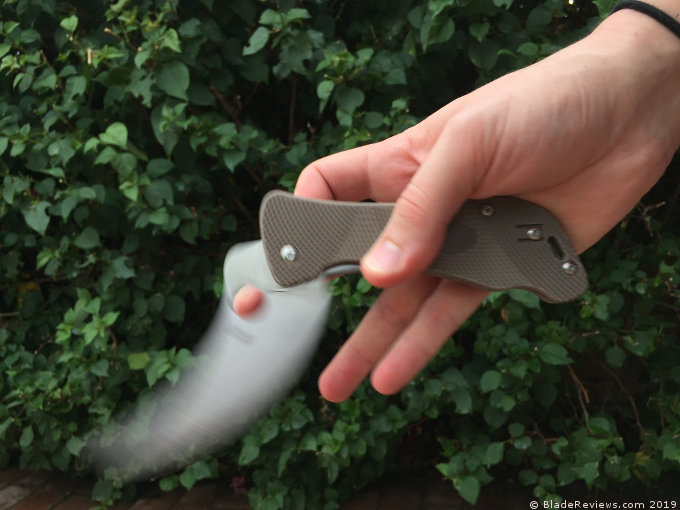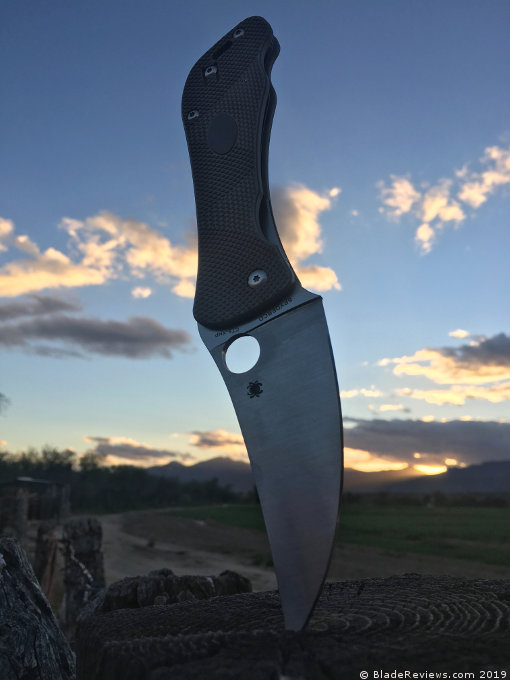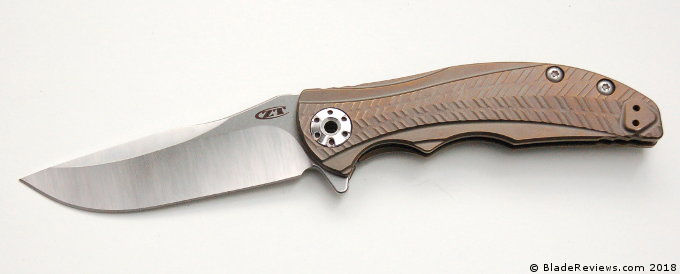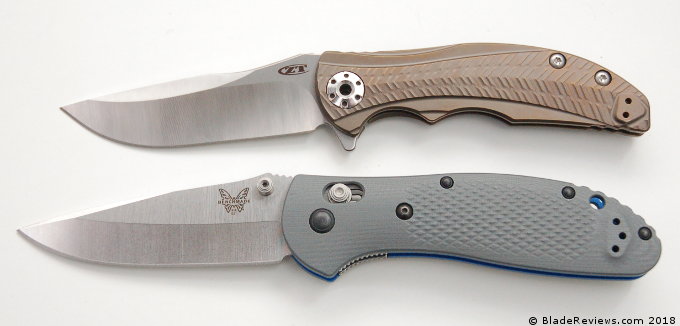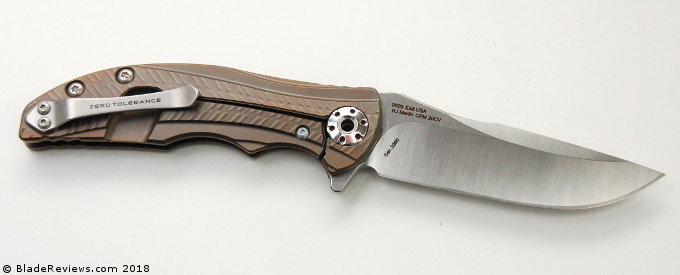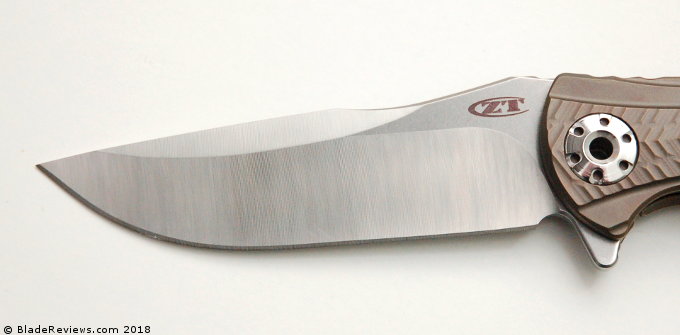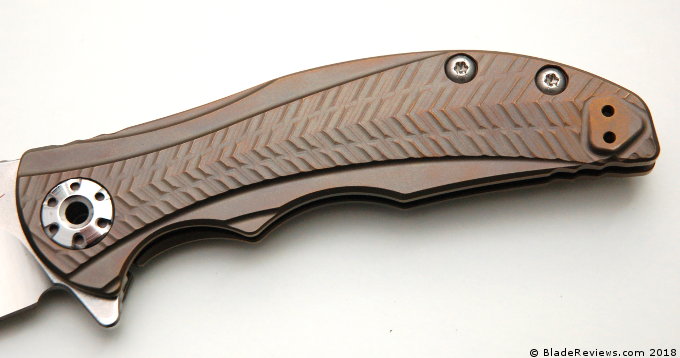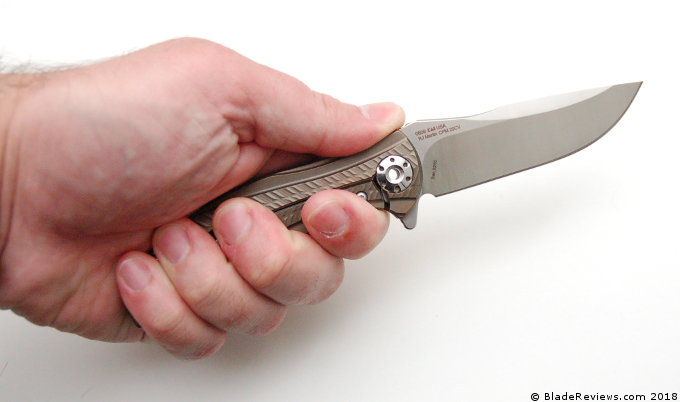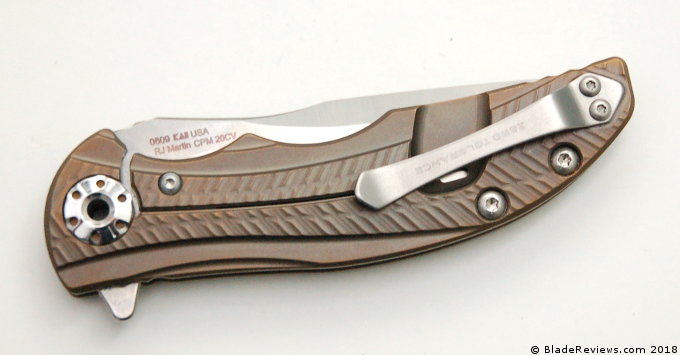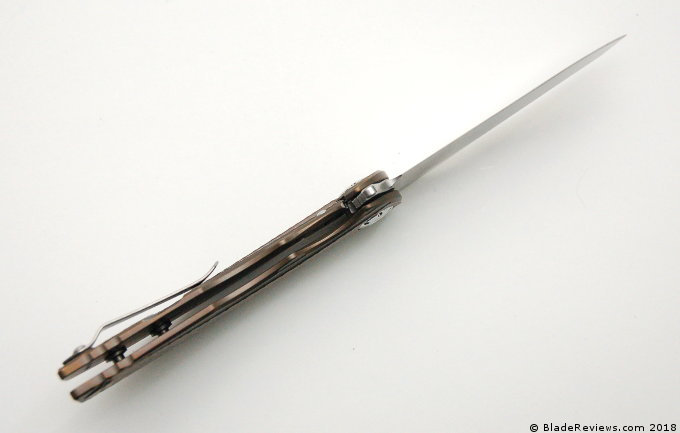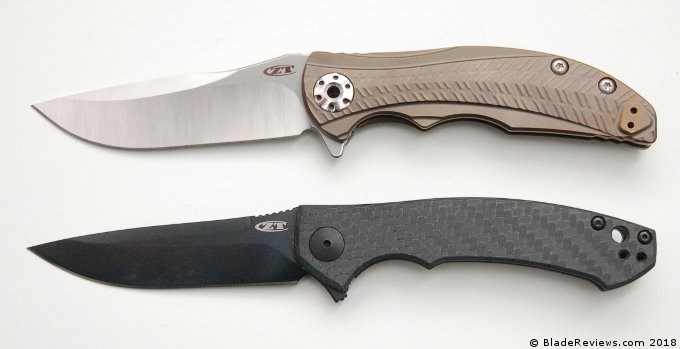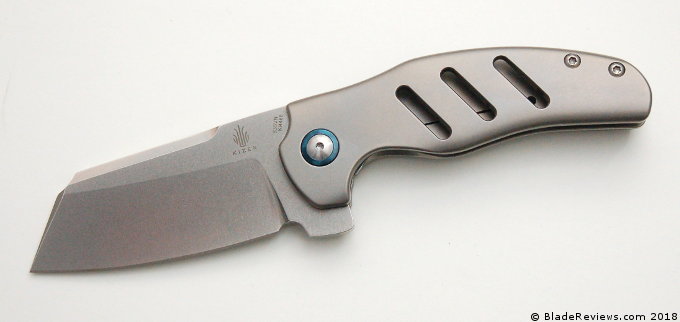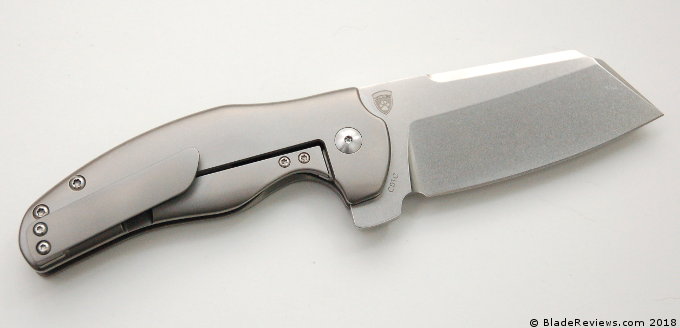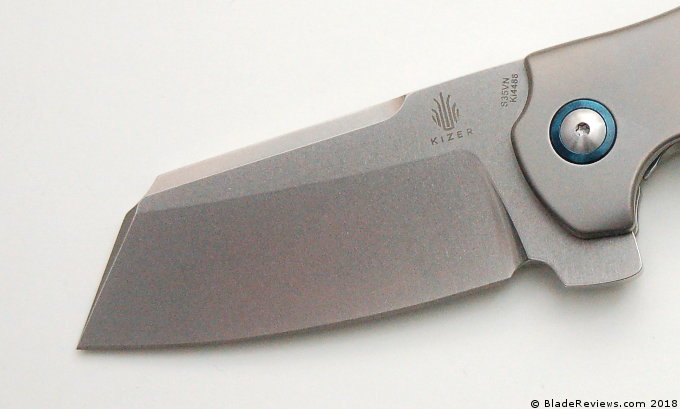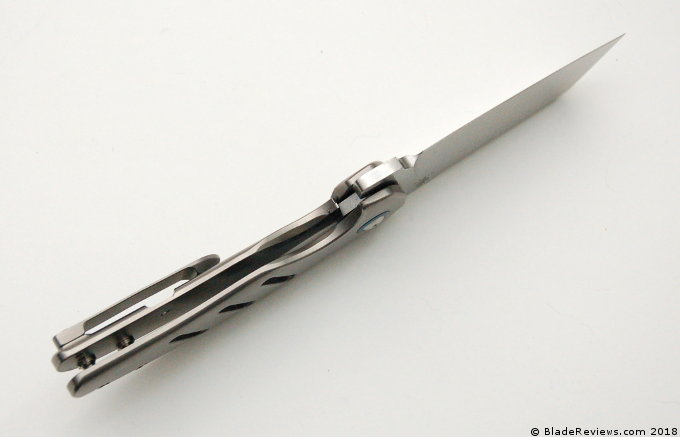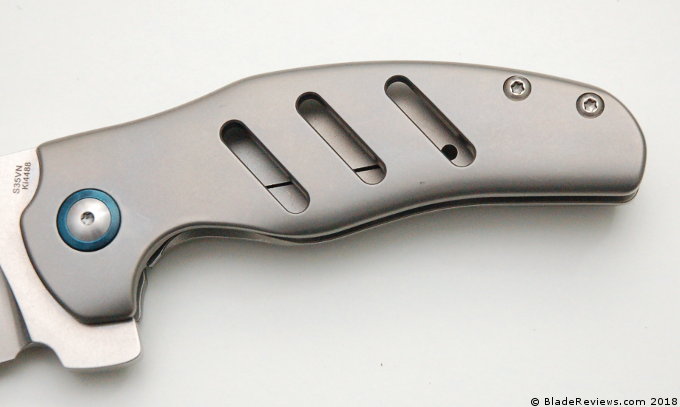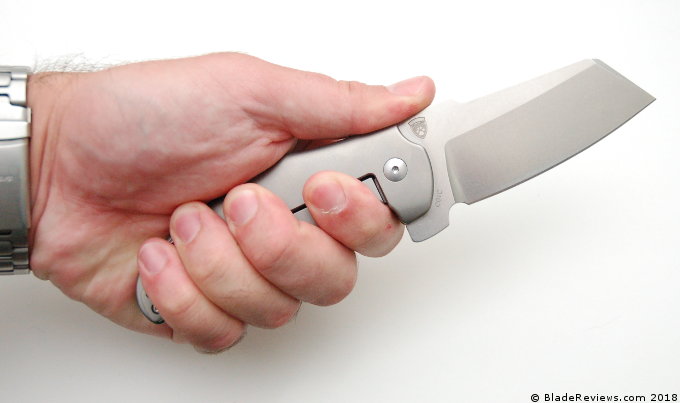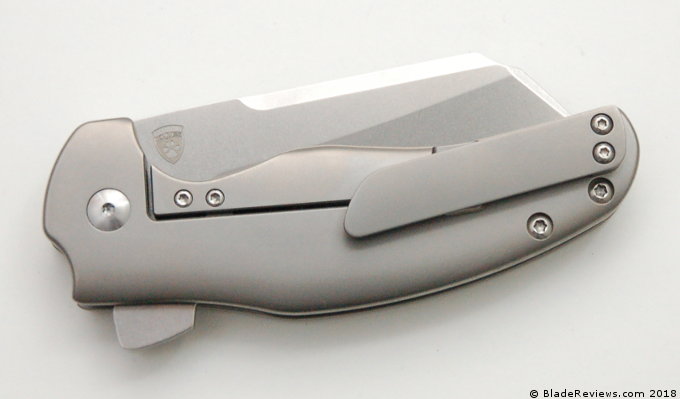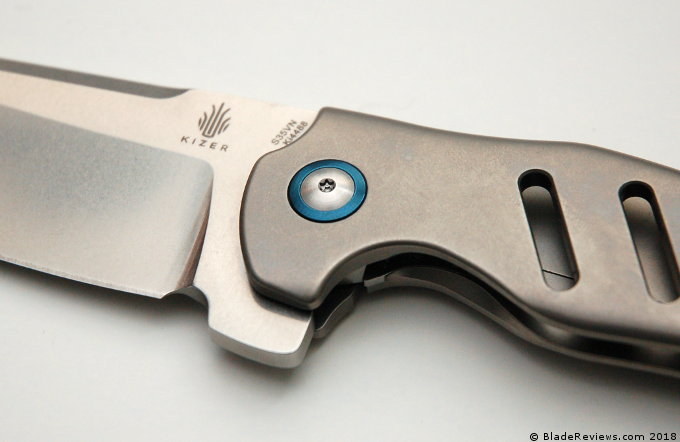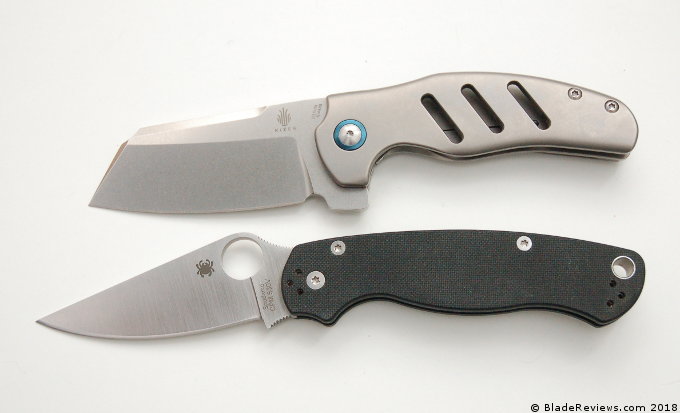Whenever there’s the thinnest excuse to use a pocket knife, I do so. Over the last month of carrying the Reate T4000 nearly every day, I’ve noticed that when I open it up in public to do any of the small innocuous things I use a knife for, I’ve seen people’s eyes light up with…not terror, but a distinct “What the hell is that?” look mixed with a tingle of atavistic fear.
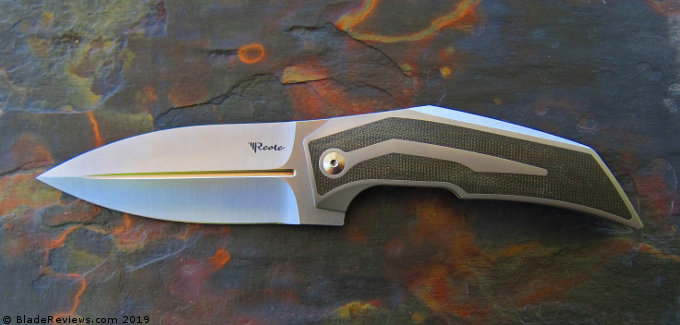
Buy the Reate T4000 at BladeHQ or GPKnives
It looks like a large double edged dagger- which, to the subconscious mind of most people, looks like what the ruling classes have been using to kill people with for the last four thousand years, and/or what everybody gets stabbed with in Game Of Thrones. I have two friends who are into knives on almost the same nerdy level that I am, and even their first responses were “Whoa!”
The instant I saw the T4000, I knew I wanted it simply for the fear/thrill reaction it gave me. But when writing a knife review, I always try to determine the knife’s intended purpose. In this case, it’s easy: when Reate Knives began teasing the T4000 in July 2018, BladeReviews.com’s own Ben Schwartz wrote an article about it for KnifeNews.com. Here’s what the designer of the knife, Tashi Bharucha, had to say about it:
[It] does not pretend to be anything other than a stabbing pocket sword.
It’s intended purpose is to be a stabbing pocket sword? Sign me the fuck up!
General Dimensions and Blade Details
The Reate Knives T4000 is part of a four-knife series, all designed by French knife auteur Tashi Bharucha. At the time of writing, only the smallest of the four, the T2500 and the T4000 have been released. The naming convention reflects the length of the blades in inches- the T2500 is 2.5” long, the T4000 is 4”, etc. The T3000 and T3500 have yet to be released.
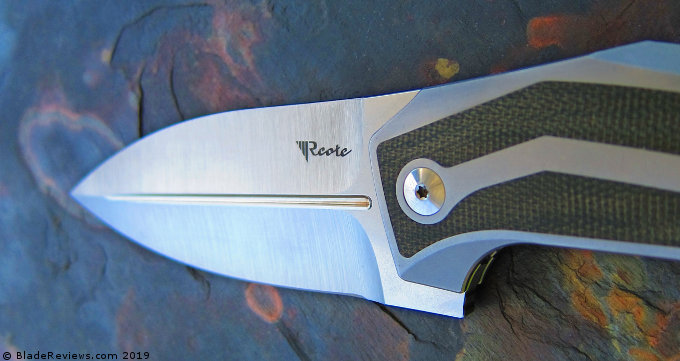
I find it curious that a French designer and a Chinese knife manufacturer are using the antiquated Imperial measurement system for the names of these knives- I’m going to assume their target market is ‘Merica. I don’t know if the pricing scheme is also related to the blade length, but the T4000 cost me $400 USD. I suppose that’s a bargain compared to Tashi Bharucha’s custom, handmade knives, which cost at least $1,000. Even though I’m a big fan of his work, I’m not going to spend over a thousand bucks on something I can’t drive, ride, or shoot.
It comes with a bunch of nice, unnecessary stuff like a Reate Knives Zipper pouch, a cleaning cloth, a microfiber knife bag, a velcro embroidered “Reate” patch, and extra handle screws, which are actually a really nice touch.
There are three handle choices: Titanium with inlaid carbon fiber, inlaid brown canvas Micarta, or inlaid green canvas Micarta, which is what I bought. It’s an unusually large and heavy folder, even bigger in every respect than my collection’s previous champion of unnecessary size and weight, the Microtech Sigil MK6.
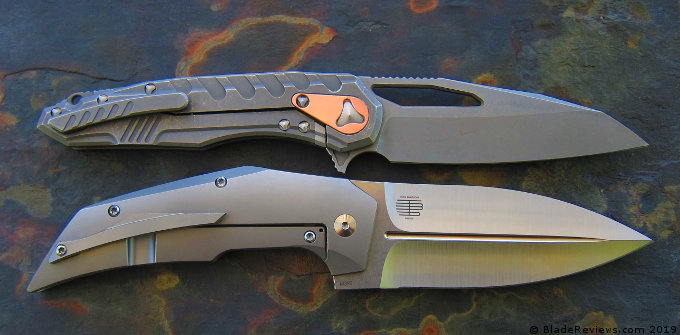
The T4000 weighs 5.3 oz (150 g), is 8.86” (225 mm) long when open, 4.92” long (125 mm) closed, and 1.75” (44 mm) tall when open or closed. Some knives disappear into your pocket- this definitely doesn’t. It’s not particularly thick though, at .68” (17.2 mm) at it’s widest point, pocket clip included.
The blade steel is Bohler M390, which is considered a “super steel” due to it’s extreme hardness and corrosion resistance. I’ve been reading up on blade steel, and want to give a shout out to knifesteelnerds.com for a lot of in-depth articles that a non-scientist like myself can understand. What I’ve learned about M390 is that it’s high hardness resists edge deformation, which keeps it sharp. The trade-off for high hardness is a reduction in toughness, which is basically resistance to chipping. A lot of these hardness/toughness qualities seem to be imparted into the blade during the manufacturing process known as heat treating. My limited understanding of heat treating boils down to this: you heat up the unfinished steel blade to get the individual molecules to bond together in a very specific way, then remove the blade from the heat to lock in the molecular structure.
Most knife manufacturers guard their heat treating methods as proprietary secrets, but Reate Knives has made this little nugget known: after the heat treating is complete, they use a technique called “freeze edging skill.” This process cools the blade while the cutting edge is being ground, so that the friction-induced heat of grinding doesn’t undo the specific molecular structure from it’s heat treating. It may just be marketing hype, but it makes sense to me.
I was recently talking to a guy who is several orders of magnitude higher than me on the Blade Steel Nerdiness spectrum, and he gave me an earful about how modern super steels like M390 are too brittle, and he prefers softer, “tougher” steel like VG10 or 154CM which are easier to sharpen. I totally get it because he’s way into sharpness- he sharpens his daily carry Sebenza with a leather strop every day whether he’s used it or not. Personally, I have a bunch of nice pocket knives that I carry and use, and I wait until they’re good and dull before I sharpen them. I would rather have a knife with a crazy hard edge that I can use longer between sharpenings. In a month of light duty cutting, I’ve barely dulled the edge of my T4000, so Reate’s M390 is working great for me.
The blade is surprisingly slim for such a big knife. It has a thin hollow grind with a decorative fuller, which briefly flares the blade’s maximum width to 3.8 mm in the center. I looked up a ton of information about blade fullers for this review, but it’s far too boring to include here.
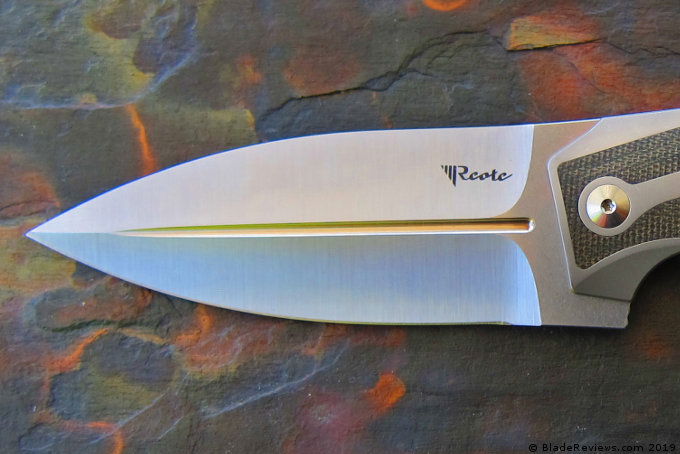
Suffice it to say that fullers are basically for structural reinforcement on long blades and are not “blood grooves.” The T4000’s standout feature is it’s aggressive symmetrical dagger shape, but the top of the blade, which is exposed when the knife is closed, has a 1.1 mm thick unsharpened edge.
This knife has excelled at my usual mundane tasks of box and bag opening and loose thread cutting, but I like trying new things, and I’ve never used a dagger for food prep before. I stabbed and slashed and hacked my way through tomatoes, onions, artichokes, sausages, etc. My experience using the T4000 in the kitchen was pretty much like with every other pocket knife I’ve used in this capacity- I couldn’t dice anything like with a chef’s knife because my knuckles would hit the cutting board before the blade would. It’s thin blade slices well, and the fuller seemed to keep food from sticking to the side of the blade. The false edge on the top of the blade is wide enough to push down on for some extra leverage.
Other uses for the T4000’s false edge are:
- Opening mail- the false edge opens envelopes perfectly without dulling the sharpened side.
- Removing staples- slip the tip of the blade under the staple and twist towards the unsharpened side.
- Pretending to slash my wrist- I’ve absolutely horrified several people.
Handle, Ergonomics, and Pocket Clip
On the T4000, designer Tashi Bharucha used a variation of his signature handle shape. From an aesthetic standpoint I love it, but I find it’s ergonomics often make the knife difficult to use. The problem, in my opinion, is how far back my hand is from the blade’s tip. There’s no place on the handle to choke up and gain the mechanical advantage of having my hand closer to the tip of the blade.
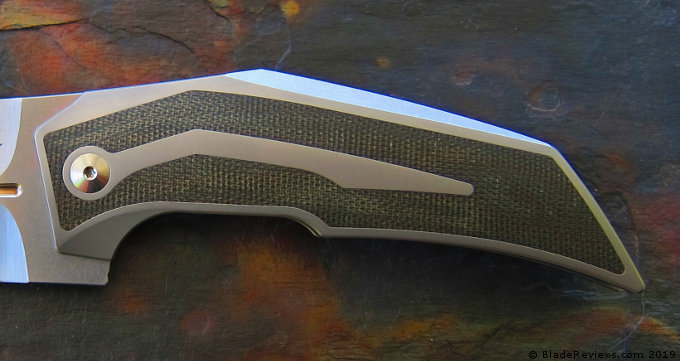
That being said, I don’t really care, because I don’t buy his knives for the ergonomics. I would never classify myself as a “fanboy” because first of all I’m not a boy, I’m a goddamn man, but Tashi’s design style really speaks to me, and I now own five of his production knives.
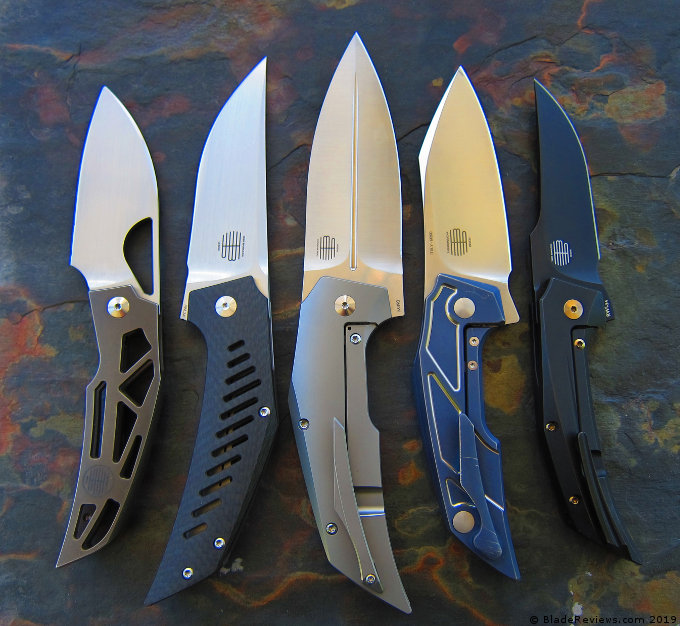
The handle ergonomics on three of the others are similar to the T4000, with the exception being the Massdrop-produced Prism (far left in photo), which cleverly exchanges some sharpened blade length for the ability to choke up on the handle. The Tashi B./Reate Knives Baby Machine (not pictured) knife has a similar ergonomically friendly shape.
The T4000’s handle is made of two pieces of titanium and one piece of green canvas Micarta. This is my first knife utilizing Micarta, and I was dismayed that after a month of sweat and cooking oil and dirty hands, the Micarta’s color has permanently changed from light green to a darker olive drab. It’s somewhat grippy texture is unchanged. The mating of the Micarta into the handle is so precise I can see where the inlaid Micarta meets the titanium, but I can’t feel the seam.
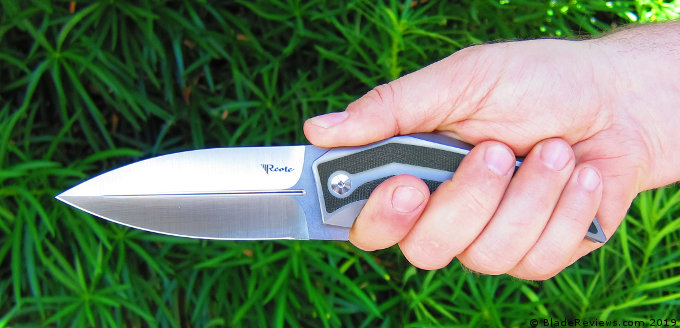
Reate’s fit and finish on this knife are superb. Every angle machined into the handle looks sharp but feels smooth. The T4000’s shape is just so weirdly aggressive that I can’t stop looking at it- it’s the knife equivalent of an Italian sports car. Specifically, the Lamborghini Urus: a 641 horsepower all wheel drive SUV that, to my eye, shares many design cues with the T4000. Please forgive my crude Photoshop skills:
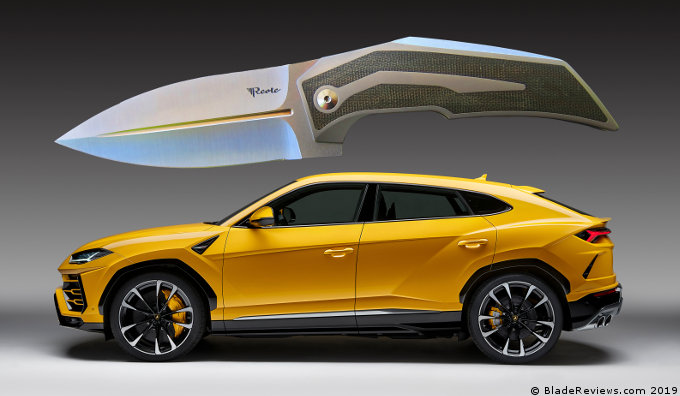
Both the car and the knife are fascinating combinations of severe lines and curves, and both come off as being large, lumpy and aggressive. I periodically see one of these big stealth tank-looking SUV’s rolling by, and my response is always “Whoa!” By the way, for an excellent review of the Lamborghini Urus, I suggest checking out the Amazon Prime TV show “The Grand Tour” season 3, episode 5 “An Itchy Urus.” Anyway, back to the knife…
The forward tip of the pocket clip is very sharp. Not cut yourself sharp, but certainly scratch the paint off your car door sharp.
Nonetheless, the clip looks great, and I think it’s pointy design is entirely appropriate for a stabbing pocket sword. The T4000’s titanium clip is milled into Bharucha’s signature stylish shape, and the clip’s shape and position mirror the titanium inlay inside the Micarta inlay on the show side. The amount of flex is great, it’s amount of offset from the body of the knife is great for thick denim jeans pockets, and it’s shape melts into the fold of my hand when I’m using it.
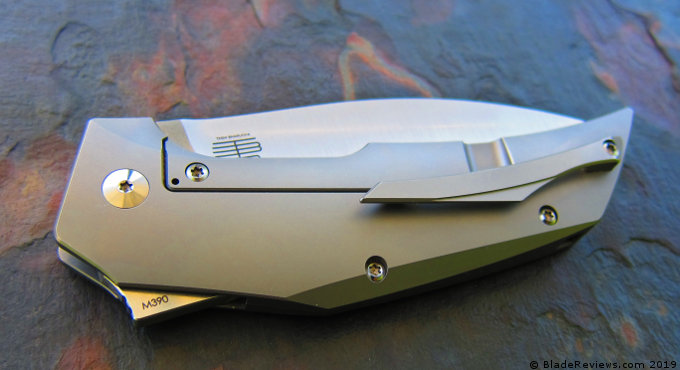
When carrying the T4000 while wearing reasonably tight pants (as I often do), the knife, though heavy, stays put due to it’s robust clip. But when wearing loose shorts, I feel that big hunk of titanium and steel rhythmically slapping my thigh as I walk.
Deployment and Lockup
The blade is heavy and the flipper detent is strong, so it takes a bit of finger muscle to open it. It swings smoothly on ceramic bearings, and has a nice strong magnet-like feel that snaps the blade closed when it’s open less than 6 mm. It’s a framelock, and locks up securely with about half of it’s 3 mm steel lock face in contact with the blade. It’s not a hard use knife like my DPX HEST F1, which has a 75% lockup on it’s 4 mm wide lockbar, but the T4000’s lock doesn’t seem to be likely to fail under reasonable use.
There is one weird thing about it though- it’s sound. When flipping it open, instead of the normal, satisfying “click” that I’ve come to expect from titanium knives, there’s a two-part sound like a metal soap bubble popping, followed by an unusually high-pitched snap. One of the nice things about having a lot pocket knives is that I have them on hand to compare and contrast with each other. At the moment, I have 16 reasonably good folding knives, and I sat down in a quiet room and flicked or thumbed open every single one. Through this highly scientific investigation I have determined that the sound the Reate T4000 makes when opening is utterly unique. The sound has nothing to do with it’s functionality at all, but it’s odd enough that I feel compelled to mention it.
Two last things: first, the T4000 has a party trick- it can stand on it’s head. Second, I was driving on US Interstate 5 on the East side of Los Angeles and noticed a 125 foot (38 meter) tall Tashi Bharucha pocket clip rising above the LA River. It’s the central spire of the North Atwater Bridge which is due to be completed in 2020. Say what you will about the evils of social media, but thanks to Facebook I was able to send the picture below to T4000 designer Tashi Bharucha. He responded that he hadn’t seen it before and, no, he did not design the bridge.
Reate T4000 Review – Final Thoughts
The T4000 is definitely a niche item. It’s not for everyone, it’s not perfect, and it’s relatively expensive at $400. But I dig the Reate T4000 stabbing pocket sword on a deep, visceral level – I don’t know if it’s an ancient, hardwired feeling of security or a Roman-Legionnaire-in-a-past-life kind of thing, but I sure do like it.
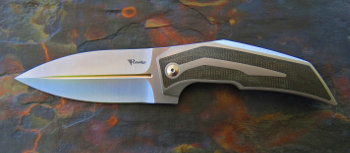
Reate T2500 – From $419.95
From: BladeHQ
I recommend purchasing the Reate T4000 at BladeHQ or GPKnives. Please consider that buying anything through any of the links on this website (including Amazon) helps support BladeReviews.com, and keeps the site going. Thank you very much.
